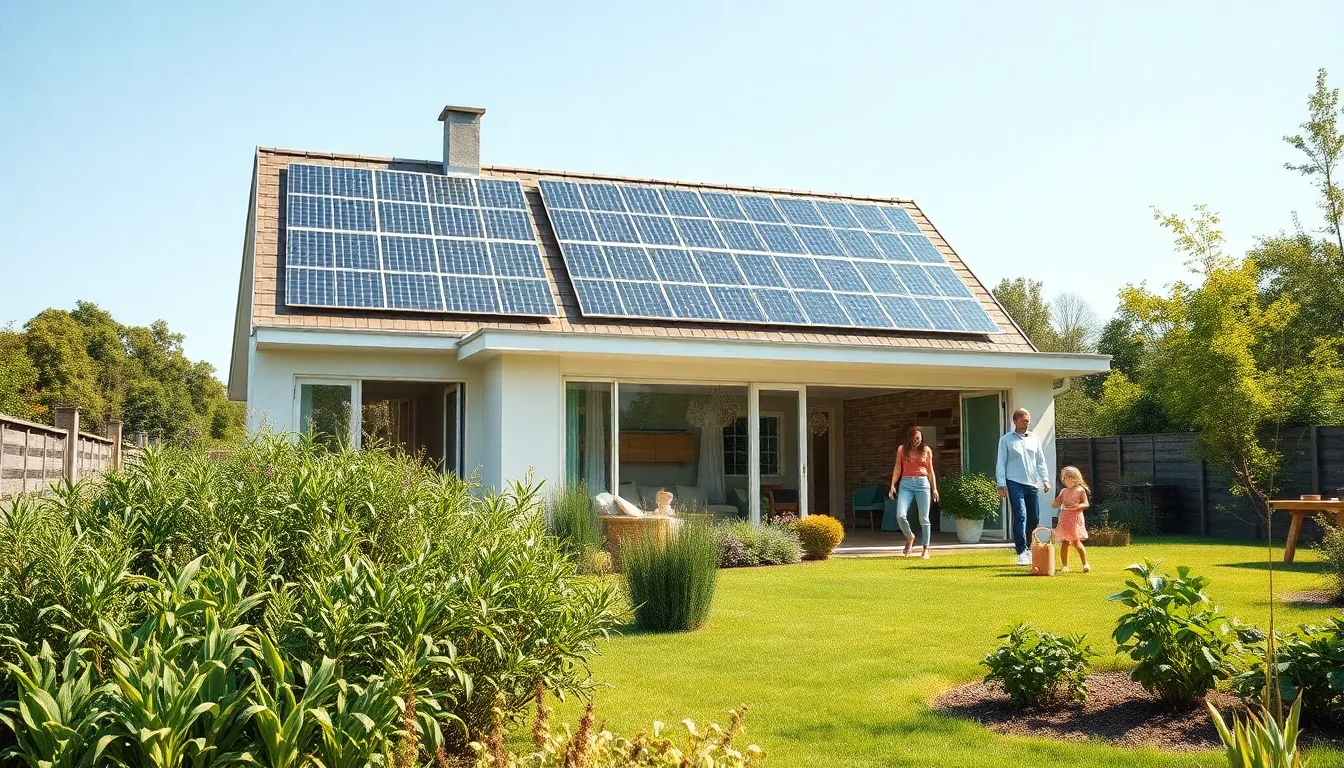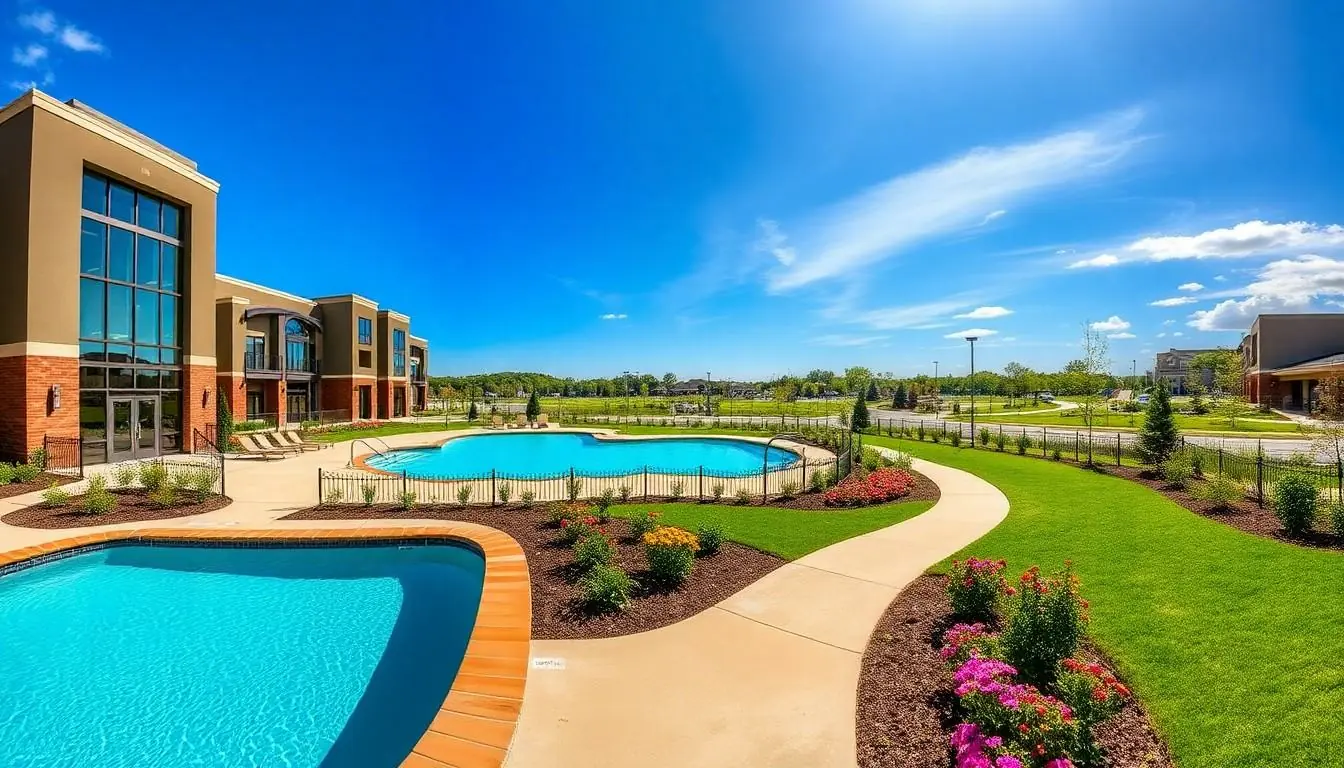As the world grapples with climate change and environmental degradation, the concept of eco-friendly homes has gained significant traction. These sustainable dwellings not only reduce carbon footprints but also promote healthier living spaces. With innovative designs and energy-efficient technologies, eco-friendly homes are becoming the go-to choice for environmentally conscious homeowners.
Building or renovating an eco-friendly home involves more than just using sustainable materials. It’s about creating a lifestyle that harmonizes with nature while maximizing comfort and efficiency. From solar panels to rainwater harvesting systems, these homes offer practical solutions that benefit both the planet and the homeowner’s wallet. Embracing eco-friendly living isn’t just a trend; it’s a commitment to a sustainable future.
Table of Contents
ToggleOverview of Eco-Friendly Homes
Eco-friendly homes prioritize sustainability and environmental responsibility. These residences incorporate features that reduce energy consumption and promote a healthier living environment.
Definition of Eco-Friendly Homes
Eco-friendly homes are structures designed to minimize their ecological impact. They utilize sustainable building materials, incorporate energy-efficient appliances, and implement technologies like solar panels and green roofs. These homes also feature designs that encourage natural light and ventilation, reducing the need for artificial heating and cooling.
Importance of Sustainable Living
Sustainable living fosters the conservation of natural resources. It plays a crucial role in combating climate change by reducing greenhouse gas emissions from everyday activities. Eco-friendly homes support this lifestyle by creating energy-efficient spaces that lower utility costs and promote overall well-being. Adopting sustainable practices in housing leads to healthier communities and a more resilient environment.
Features of Eco-Friendly Homes

Eco-friendly homes incorporate various features that prioritize sustainability and energy efficiency. These features not only benefit the environment but also enhance living conditions for occupants.
Energy-Efficient Design
Energy-efficient design focuses on optimizing energy use throughout the home. It includes:
- Passive Solar Design: Maximizes natural sunlight for heating, reducing reliance on artificial lighting and heating systems.
- Insulation: Utilizes high-performance insulation materials to minimize heat loss in winter and heat gain in summer, leading to lower energy costs.
- Windows: Installs double or triple-glazed windows that provide better thermal performance, reducing heating and cooling demands.
- Orientation: Aligns the house for optimal sunlight exposure, enhancing natural light throughout the day.
- Energy Management Systems: Integrates smart technologies that monitor and regulate energy usage, promoting efficient energy consumption.
Sustainable Materials
Sustainable materials play a crucial role in the construction and renovation of eco-friendly homes. These materials include:
- Recycled Content: Utilizes recycled materials in construction, such as reclaimed wood and recycled steel, reducing waste and conserving resources.
- Low-VOC Products: Chooses paints, adhesives, and finishes that emit low levels of volatile organic compounds, improving indoor air quality.
- Bamboo: Selects bamboo as a fast-growing alternative to traditional hardwood, offering durability while promoting sustainable forestry practices.
- Local Sourcing: Sources materials locally to minimize transportation emissions and stimulate local economies, supporting sustainable practices.
- Durable Materials: Employs long-lasting materials that require less frequent replacement, further reducing environmental impact over time.
These features epitomize the commitment of eco-friendly homes to sustainability, ultimately fostering a healthier living environment.
Benefits of Eco-Friendly Homes
Eco-friendly homes offer numerous advantages that extend beyond individual comfort and convenience. These structures promote sustainability and contribute positively to both the environment and the inhabitants’ health.
Environmental Impact
Eco-friendly homes significantly reduce ecological footprints by using renewable energy sources, such as solar panels, which can lower reliance on fossil fuels. Sustainable building materials, like bamboo and recycled steel, minimize resource depletion and energy consumption during production. Implementing water conservation practices, such as rainwater harvesting and low-flow fixtures, decreases water usage and helps maintain local water sources. Green roofs, which improve insulation, lower energy costs, and enhance biodiversity, further support environmental health. Collectively, these features lead to reduced greenhouse gas emissions and a smaller overall environmental impact.
Health Advantages
Living in eco-friendly homes enhances occupants’ well-being through better indoor air quality, achieved by using low-VOC paints and natural materials. High-performance insulation mitigates temperature fluctuations, preventing mold growth and promoting a healthier living space. Natural lighting and proper ventilation contribute to mental health, reducing stress and increasing productivity. Moreover, eco-friendly homes often feature spaces that encourage physical activity and interaction with nature, leading to a balanced lifestyle. These health benefits reinforce the importance of sustainable living, ultimately fostering happier, healthier communities.
Challenges in Building Eco-Friendly Homes
Building eco-friendly homes presents various challenges, including cost considerations and navigating regulations. Awareness of these obstacles helps homeowners and builders address them effectively.
Cost Considerations
Cost remains a significant challenge in constructing eco-friendly homes. Upfront expenses for sustainable materials and energy-efficient technologies often exceed traditional building costs. For instance, solar panel installation averages between $15,000 and $30,000, although long-term savings on energy bills can offset this initial investment. Additionally, specialized labor costs for green construction techniques can add to the financial burden. Homeowners may find financing options, such as green loans or incentives, available to mitigate these costs.
Regulations and Permits
Navigating regulations and permits adds complexity to building eco-friendly homes. Local building codes often require adherence to specific standards that may not align with sustainable practices. Zoning laws can restrict the implementation of features like green roofs or rainwater harvesting systems. Obtaining necessary permits may involve lengthy approval processes, which can delay projects. Future advancements in regulations are likely to encourage more eco-friendly practices, streamlining the path for sustainable home builders.
Future Trends in Eco-Friendly Homes
Innovations and community efforts are shaping the future of eco-friendly homes. These developments focus on advancing sustainability, enhancing energy efficiency, and fostering resilient communities.
Innovations in Green Technology
Innovations in green technology are key drivers in the evolution of eco-friendly homes. Smart home systems integrate renewable energy sources, allowing homeowners to monitor and manage energy consumption effectively. Examples include smart thermostats and energy-efficient appliances that adapt to users’ needs, optimizing energy use based on real-time data.
Additionally, advancements in building materials enhance sustainability. Photovoltaic glass, for instance, serves as both windows and solar panels, generating energy while providing natural lighting. Furthermore, developments in insulation materials, like aerogel and hempcrete, improve thermal performance while being environmentally friendly.
Water-saving technologies, such as greywater recycling systems, enable homeowners to recycle water from sinks and showers for irrigation. Implementing these systems significantly reduces water usage, promoting conservation. Collectively, these innovations demonstrate a commitment to building homes that resonate with environmental stewardship.
Community Efforts Towards Sustainability
Community efforts enhance the impact of eco-friendly homes, emphasizing collective responsibility. Neighborhoods increasingly collaborate to implement renewable energy projects. Initiatives like community solar farms provide residents access to solar energy without the need for individual installations, democratizing green energy.
Local governments and organizations promote urban agriculture through community gardens, fostering sustainable food production. These spaces encourage local consumption and reduce carbon footprints associated with food transportation.
Moreover, educational programs raise awareness about sustainable living. Workshops on composting, energy efficiency, and water conservation engage residents, turning eco-friendly practices into community norms. These efforts unify communities around sustainable goals, ensuring a larger positive impact on the environment.
Embracing eco-friendly homes is more than a trend; it’s a necessary shift towards sustainable living. These homes not only contribute to environmental preservation but also enhance the well-being of their occupants. By integrating innovative technologies and sustainable practices, homeowners can create spaces that are both efficient and comfortable.
The journey towards an eco-friendly lifestyle may present challenges, but the long-term benefits far outweigh the initial hurdles. As communities come together to support sustainable initiatives, the future looks promising. With ongoing advancements in green technology and a growing awareness of environmental issues, eco-friendly homes will continue to play a crucial role in shaping healthier and more resilient communities.







